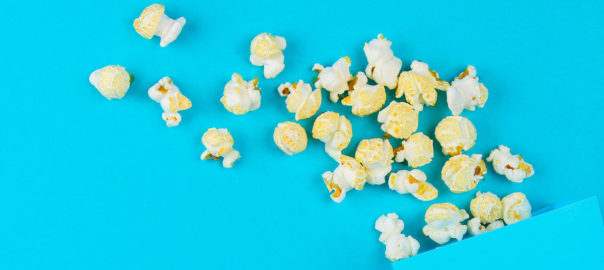|

|

|
|
|
|

|

A few words — or even a few dots — can make a big difference. Compliments of a PAMA Facebook post, BookBub’s 8 Book Description A/B Tests You Need to See …
Emma Watson and the Station of Secrets.
Watch:
Find out how the podcast boom can favor and disfavor diversity in this Columbia Journalism Review article.
Also check out:
10 great podcasts to diversify your listening lineup
Programmatic is like a planet. We live on the thin surface layer but most of the hot stuff is under the surface.
“Facebook just executed what might best be described as a digital advertising coup against rival Google and its DoubleClick empire” by letting publishers use header bidding technology. This could raise ad costs but increase yield, says AdAge.
Drill a hole and peek into the Magma
Or simply find out:

The Wall Street Journal reports on how the millennial news platform .Mic is rethinking video sponsorship. Mic is allowing advertisers to sponsor their highly popular videos on Facebook:
“Instead of selling…ads based on content genre or audience demographics, Mic is putting its editorial videos into categories, such as clips that elicit emotions or videos that celebrate innovation—two popular genres that typically incite people to share, and letting advertisers run ads next to these types of videos.”
While this kind of sponsorship is not useful for any book that needs time to tell its story, it could be very interesting for a book with immediate appeal to millennials with a high education and relatively high HHI.
Have you played around with Google’s Display Ad benchmark tool recently? It can be very useful for setting expectations. Click-through rates seem to be going down across the board. If you set it for U.S. Book ads, the display CTRs range from .04-.6% depending on the size. Mobile only sizes such as 320×50 fare a little better with a .18% CTR. While this is certainly the case for the industry as a whole, Verso’s own click-through rates continue to beat industry averages—ranging from about .10% for desktop to twice that for mobile.
#CTR #Google #data #benchmarks
Long a staple of advertising plans for all manner of products, out-of-home advertising has gained a new edge with digital billboards. Digital capabilities mean advertisers can move much more quickly on campaigns instead of having to plan six to eight months ahead for each iteration. As CMO magazine puts it:
“The integration of data and technology means advertisers can tap into OOH like never before. ‘And it’s really shifting into bringing back the things that digital has kind of lost–the sensory experiences, feelings, and interactions.'”
There’s a reason spending on out of home advertising continues to grow.
#billboards #OOH #digital
As part of IAB’s recent podcast upfronts, ESPN announced that it’s bringing it’s acclaimed 30 for 30 series to podcasts. With in-depth reporting about sports news, 30 for 30 videos appeal to sports fans of a more thoughtful bent . . . which is to say, sports fans who might be inclined to buy books on a subject in an effort to go deeper than in-game color commentary or talk show style chatter. For book publishers who might not be able to afford a :30 ad on ESPN, running mid-roll on a podcast might be a highly targeted ad solution.

While podcasts still don’t deliver the ad metrics of other digital products, evidence continues to mount that podcast advertising is effective. A new Edison Research study commissioned by the IAB suggests that 65% of podcast fans “are more willing to consider purchasing products and services they learn about during a podcast.”
Four charts from eMarketer show how Instagram’s U.S. audience is substantial and growing, that more than half of US millennial internet users are “active” on Instagram, how the app is favored by college students, and how their user base trends toward higher incomes among U.S. teens.
#instagram #millennials #social
“’Instagram remains the king of engagement,’ with interactions that are ’10 times higher than Facebook, 54 times higher than Pinterest, and 84 times higher than Twitter.’
It also says Instagram users are considerably more open to what brands have to say on that platform, with 50% of users following brands. ‘Not all brands are benefiting equally on the platform,’ it says, ‘with the top seven brands in terms of engagement capturing 77% of total Index brand interactions over the past year.’
Further, a third of Instagram users made purchases on their phone, which makes them 70% more likely to do so than non-Instagram users.”
In an article for Ad Age, Carrie So argues that Facebook Live mid-roll ads are stuck in the past:
“Essentially, the concept strives to resurrect the 20th-century TV broadcasting model within the context of a 21st-century social network. Having just recently started testing mid-roll ads, Facebook Live wagers that viewers who log onto the site to see photos and updates from family and friends will not only want to watch live broadcasts — but will also stay tuned for the ads that scroll in the midst of the live programming.”
The two main problems: (1) mid-roll ads are easy for users to skip since it’s so easy to put down your phone during a break in the programming, and (2) there’s a distinct lack of quality control; even major publishers such as the New York Times are forced by their deals with Facebook to stream too many video hours to sustain high standards.
A recent ad fraud report cited by the Wall Street Journal suggests the most ad fraud happens with Google’s Chrome and Microsoft’s Internet Explorer browsers. While both companies fault the study, it’s clear that since the two companies have the most users they also make the most attractive targets for fraudsters. While Microsoft has failed to patch security holes on IE (especially discontinued but still popular iterations), Google continues to work hard to try to stay ahead of the fraud where possible.
The Pew report on reading in America is out, with results in line with what we’ve seen in recent years: overall adult reading is slightly down, ebooks remain plateaued, and the core demos of America’s strongest readers remain affluent, educated women:
“In the most recent survey, those most likely to be book readers included women; young adults (those ages 18-29); [and] those with higher levels of education and higher household income . . . These patterns largely hold for overall book reading and for the different reading platforms – printed books and e-books.
“The average woman read 14 books in the past 12 months, compared with the nine books read by the average man, a statistically significant difference. The median number of books read by women was five, compared with a median of three for men, which was not statistically significant.
“Those with higher levels of education were more likely to have read multiple books than those with high school diplomas or less. The typical college graduate or someone with an advanced degree read an average of 17 books in the previous year, compared with nine for high school grads and three for those who did not graduate from high school.”
The first vertical video ads have gone live on Facebook, and the results suggest a 3x improvement in performance and efficiency. This might be simply an example of a format getting increased attention mostly because it’s new, but given how video and social consumption have moved to mobile, we do think vertical video is here to stay.
The New York Times reports on the continued importance of out of home advertising, even as online ads steal budgets from print and broadcast. The continued growth of digital innovation with billboards—both with creative and with user targeting—means the venerable ad platform is just as vital today as it was 100 years ago.
An article in Marketing Land points to a new report from ComScore that shows that two-thirds of all time is spent on mobile, and over half of time spent on mobile happens within apps. But while mobile has most total user hours, desktop still is king of the conversion. When the consumer is ready to pull the trigger, s/he still heads for the desktop. Here’s Business Insider’s take on the ComScore report.
Ceiling photo detail (c) 2016 Martha Otis

Geo-fencing can be a very effective mobile targeting tool. Now, that targeting option comes to the roving double-decker tourist buses that prowl the streets of major U.S. cities including New York, San Francisco, LA and Chicago. With the strong correlation between travelers and book buyers, targeting tourist buses could be a great way to target readers not just for travel-related titles, but for any title that gives particular insight into a city—whether it’s a celebrity biography that hits high points in key L.A. locations or a new edition of Bright Lights Big City on the streets of Manhattan.
Mary Meeker’s definitive Trends report is out for 2016. The main sections focus on the continued growth of mobile, especially in social channels, and the opportunities in transportation. Here are relevant highlights for book advertisers:
Digiday reports that Facebook is expanding the walls of its walled garden:
“Last week alone, Facebook shut down its last pure programmatic ad exchange FBX, put the final nail in the LiveRail platform, and expanded its Facebook Audience Network, which is a closed platform.”
This means FB is taking its extensive and proprietary user data and serving ads beyond social. Bad news for independent ad tech, good news for advertisers.
For marketers looking to create sound files in-house–whether as podcasts or to share across social media, startup Anchor is worth a look. Will it grow like Snapchat or vanish like Ello? ClickZ suggests the question is irrelevant:
“It doesn’t really matter if Anchor becomes a ghost town at some point in the future. As of right now, it’s the only platform that influential media figures and brands are using to drive audio interaction across channels. That should be reason enough to try it out and incorporate it into the mix of formats you use.”
Vanity Fair is launching a new site—The Hive—dedicated to the intersection of business, politics and tech, and built for a digital first world. Digiday reports on the new site:
“What works brilliantly in the magazine is that sense of discovery, but that doesn’t really work on the web,” said Chris Mitchell, publisher and chief revenue officer of Vanity Fair. With the Hive, he said, “We get the halo of Vanity Fair, the built-in audience and SEO of Vanity Fair, but we also get to have it live in its own space, which is good for advertisers but also will be interesting to readers as well.”
AdWeek reports on a new comScore study that finds that people prefer podcast ads to all other types of digital ads:
“And not only do listeners not mind hearing them—they act on them. The study of 2,000 U.S. respondents ages 18 to 49 found that two-thirds of listeners have acted on ads they heard in a podcast either by researching a product or service or by actually purchasing something they first heard about in an episode.”
Photo (c) Martha Otis

It’s Fleet Week in NYC and Memorial Day Weekend throughout the rest of the U.S., but as we stand over the grill this weekend, we’ll also be pondering the states of the art of social buy buttons, mobile advertising, podcasting . . . and grilling.
Digiday reports that buy buttons on Pinterest and Instagram have not taken off for retailers. This is more evidence that social media cannot be the sole focus of your marketing plan. Whether you believe in marketing funnels or marketing pinball, there is a difference between awareness, engagement, and intent to purchase.
#social #marketingfunnel #marketingpinball
Luxury brand Burberry is a social media powerhouse with over 40MM social followers, but that hasn’t translated to sales, as revenue is slipping. They’re working on it, but Burberry’s conundrum remains a cautionary tale for marketers everywhere.
To improve performance, Google is revamping its mobile ad platform to allow for more and bigger ads. This is good news for advertisers.
The explosive growth of podcasts continues:
“‘We’ll probably more than double this year, and, the year before, it tripled year-over-year, so we’ve been seeing really great growth over the past three or four years in podcasting. Just looking back, I think we’re 10 times where we were three years ago,’ said Bryan Moffett, general manager of National Public Media, NPR’s corporate underwriting division.”
Photo (c) Lynn Ruane

This New York Times article explores how podcasts are expanding beyond Apple’s original vision, and asks what that means for the future of podcasts—especially in the face of real competition from the likes of Spotify and Amazon’s Audible. The market continues to expand:
“By last year, at least 46 million Americans listened to podcasts each month. This year, that number will reach 57 million, according to a survey by Edison Research.”
Video darling Vine has seen a major decline as more than 50% of major influencers have left the platform. Facebook live is ascendant.
Video marketers pay heed: 85% of Facebook video is watched with the sound off. That should help with the audio line on the production budget at least.
Digiday reports that Snapchat is developing a curatorial algorithm that will function to determine the content users “want” to see. Whether or not this is good news for the users is an open question, but it undoubtedly means that Snapchat is developing new advertising projects. None of this is a surprise.

Digiday has an interesting article about the evolution of podcasts and the need for improved measurement. Measurement is still not there yet—even the link within the article to NPR’s proposed measurement guidelines is broken. But we expect it to happen. Fun fact from this article: NPR is working on a podcast that’s like RadioLab, but for the Supreme Court.
While news and sports podcasts still dominate the top 10 most popular podcasts in the iTunes store, fashion bloggers are discovering the effectiveness of the podcast platform, and are expanding the ways sponsored content is integrated into popular podcasts.
“BuzzFeed has mastered the art of distributed publishing, using platforms like Facebook, Snapchat and others to amass massive audience attention. The publisher boasts a mind-boggling 5 billion views per month of its articles and videos, spread out across 30 platforms, from Facebook to Pinterest to Snapchat. In a month it does 3 billion video views, less than 5 percent of which are on BuzzFeed.com. The bet is simple: publish content where people are, rather than forcing them to come to you.”
They’re the player to beat in this space, but wake us up when their minimum spend dips below six figures.
Pop Sugar’s Brian Sugar is going all in with native and affiliate marketing.
eMarketer notes that eReaders continue to sell, especially with the 65+ age demo.
As advertisers we have watched the continual evolution of billboards as they develop digital chops not just to display creative, but also to target users in their vicinity through geo-fencing app networks. Now, a New York Times article notes that billboards technology is able to track user information beyond mere app targeting to give you demographic information about foot traffic that is encountering your out-of-home ad.
New deals with Nielsen and Sizmek are allowing Snapchat to learn more about ad performance and audience measurement.
#snapchat #audience #data #targeting